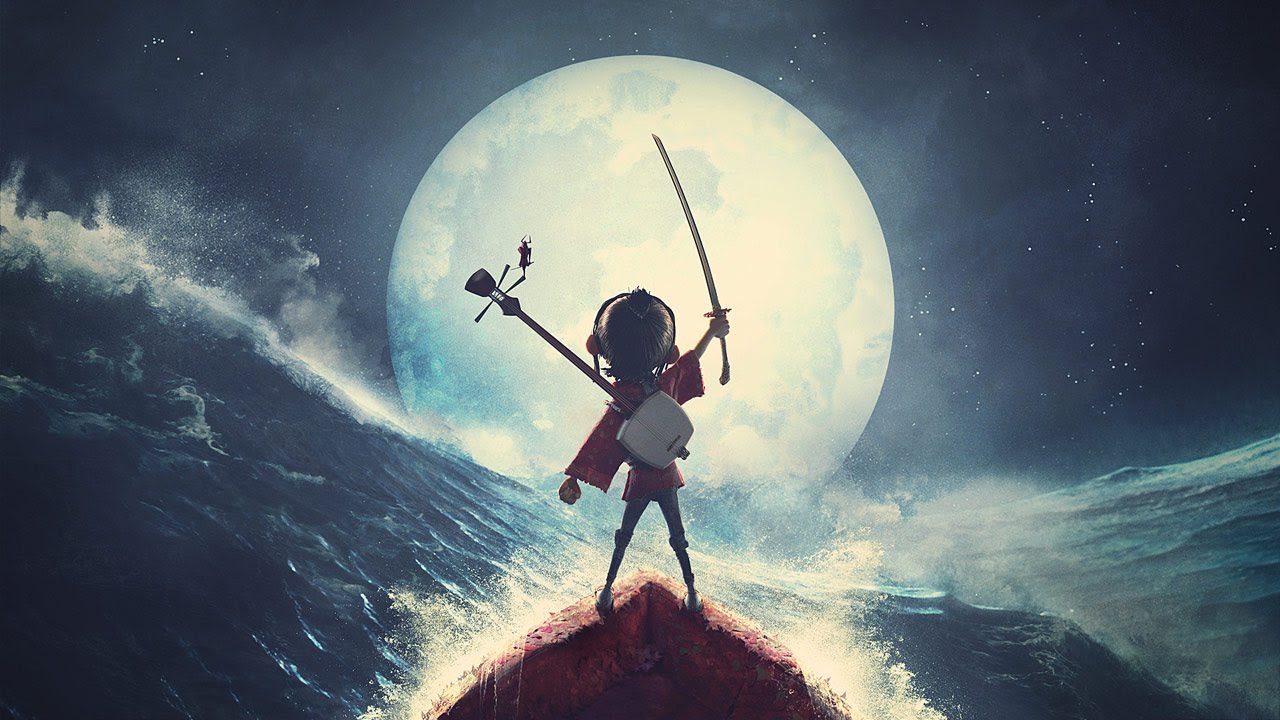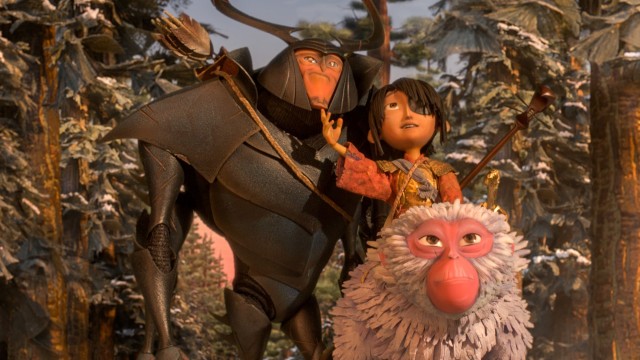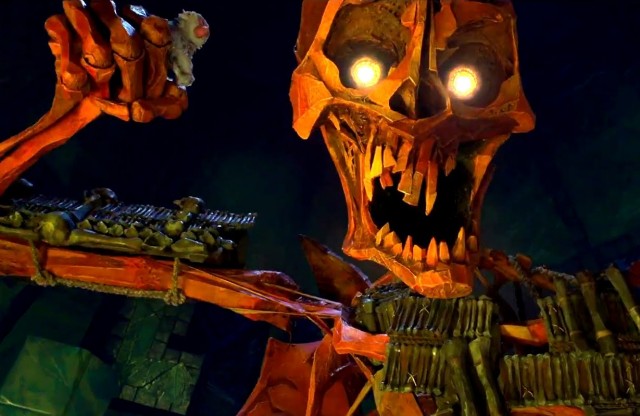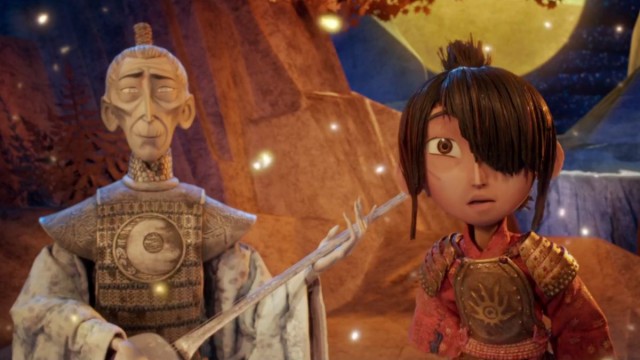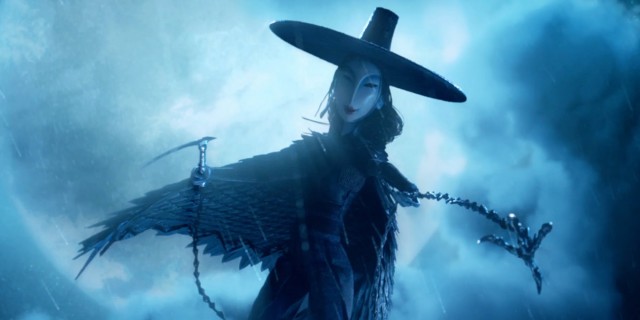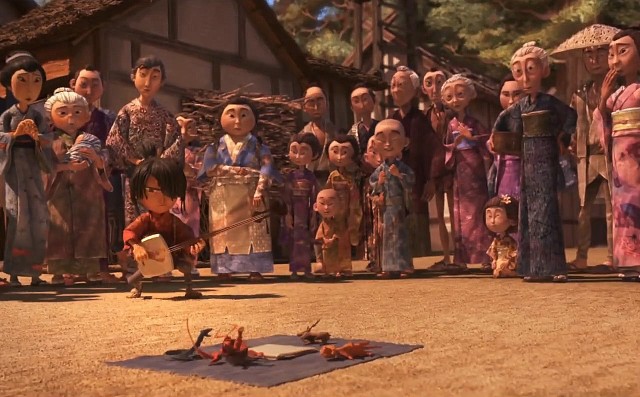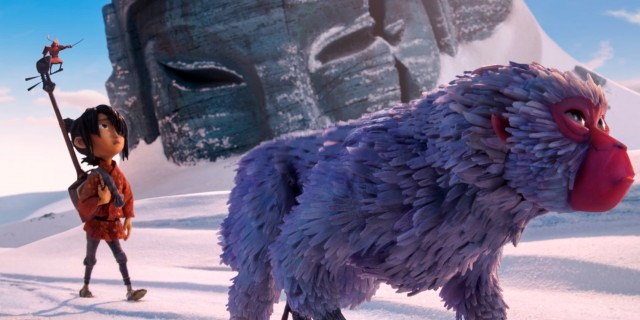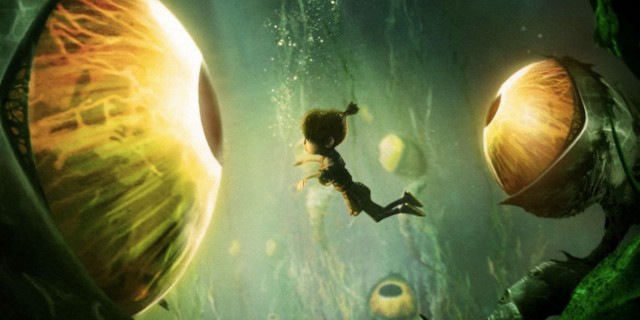Japanese culture and sensibilities may have played a key part in the development of the video game industry, but it’s had a noticeably tougher time at the movies. Anime-inspired Hollywood movies have virtually always ended up being unmitigated disasters, even more so than the equally maligned initiative of adapting video games to the big screen, and recent efforts to adapt Japanese-flavoured movies like 47 Ronin have similarly fallen flat on their faces at the box office. Fortunately, box office woes are no issue to stop-motion studio, Laika, which thrives on critical and cult praise, despite disappointingly low earnings for their various movie projects.
Kubo and the Two Strings is another Laika movie that has failed to set the box office alight, even when being paired against two other new movie releases that under-performed, one of which, Ben-Hur, has even infamously become the year’s biggest flop so far. Like previous Laika movies, Kubo and the Two Strings is also a movie that deserves far more attention from audiences of all ages, since it tells a visually captivating and creatively exciting tale, and has the rare distinction of being a large-scale cinematic adventure movie that’s entirely conceived from an original story, and isn’t an adaptation. Even if you aren’t normally attracted to Japanese-inspired media, this is a fun, character-filled movie that is very well put-together, and rounds off this year’s Summer movie lineup with one of its best under-the-radar successes!
The title character of Kubo and the Two Strings is Kubo, a young boy living in ancient Japan, voiced by Game of Thrones’ Art Parkinson. Kubo was rescued by his mother from a deity called the Moon King, voiced by Ralph Fiennes, who is trying to steal the one-eyed Kubo’s remaining eye, and this prevents Kubo from going out and interacting with the various villagers after sundown. Despite that however, Kubo is highly beloved around town for being a very accomplished storyteller that can seemingly bring to life various origami creations that illustrate his words, and this sets him up to eventually be swept on an adventure unlike anything he could have imagined!
Immediately, Kubo is a likable and relatable main character, one who doesn’t totally understand why he can’t go out at night, yet still does his best to obey his mother, who is mentally addled, and tends to drift in and out of consciousness. It’s not often that you see an animated, family-friendly movie portray a parental character with such clear and blatant mental difficulties, but that’s one of the many strengths of Kubo and the Two Strings’ bold storytelling. As much as it depicts a larger-than-life adventure, the movie still comes from a real, emotional place, and Kubo still manages to feel like a real person, despite the fact that he exists in such a surreal world.
That feeling also doesn’t disappear when Kubo’s adventures properly kick off. At this point, he’s swept to various hostile, unpredictable locations, though manages to find two allies. The first of these is Monkey (who is not even a monkey, but actually a white baboon), voiced by Charlize Theron, who watches over Kubo as a protective spirit, and frequently clashes with the brave boy in her desire to keep him from harm. The second ally is Beetle, voiced by Matthew McConaughey, an amnesiac beetle-like samurai who trained under Kubo’s father, Hanzo, a famous warrior. This is the first time that McConaughey has done voiceover for an animated movie, but despite that, he effortlessly keeps pace with Theron and Parkinson, being a character who largely exists for the sake of comic relief, but one that still clearly has a heart and drive of his own. Beetle could have easily been written as a plot-convenient screw-up that does nothing but cause trouble, though fortunately, the very smart script makes his mistakes likable and amusing, without ever becoming grating, especially since Beetle can indeed hold his own in combat.
As for the movie’s villains, it’s difficult to go into them much without spoilers, but they get the job done, even if they feel more like forces of nature than fully fleshed-out threats. In fact, this is the only area where the movie does sometimes falter in its storytelling; Its divine lore is sometimes without rules or clear explanations, and that does sometimes lead to a sense of plot contrivance in a few scenes, especially where the villains are concerned. Fortunately though, that feeling is pretty minor, and even if the villains do seem to just do whatever the script wants them to in any given scene, they are enjoyable and stylish baddies, and when the adventure is over, their arcs, as with those of the heroes, do reach a satisfying and genuinely surprising end.
The premise of Kubo and the Two Strings can be simply described as a young Japanese boy teamed up with a ‘monkey’ spirit and a beetle samurai in an effort to locate missing weapons and armour of a legendary warrior, which will allow him to fight back against the villainous Moon King. It sounds pretty fantastical and eccentric, but the movie’s storyline is a very well-told one. Kubo and the Two Strings definitely has a storyline that benefits from audiences knowing little about it before going into the theatre, so that they can be surprised by the movie’s many clever turns. Not only that, but Kubo and the Two Strings also runs a huge gamut of emotion, and is very good at tugging at audiences’ heartstrings. This definitely rewards repeat viewings, and anyone that’s even slightly invested in this storyline will have no trouble laughing, crying and cheering along with Kubo on his quest.
Many people have also compared this movie to Nintendo’s The Legend of Zelda games, and that comparison is at least slightly apt, in the sense that the adventure has a similarly youthful, fun and innocent spirit. It’s also a similar story about a young boy protagonist tracking down a series of macguffins in themed environments, for what that’s worth. The overarching adventure behind Kubo and the Two Strings will definitely appeal to fans of The Legend of Zelda and similar media, but the real lasting power of the movie’s storyline comes from its heart, its sense of emotion, and its unexpected, charming conclusion. You’ll come for the quest, but you’ll definitely stay for the soul!
Kubo and the Two Strings is directed by Travis Knight, a frequent animator and producer for Laika, who is making his directorial debut here. Even for a first effort though, Knight’s direction of the movie is absolutely fantastic! Every scene lands, every emotion is felt, and every beat to the story is realized nigh on flawlessly, between the visuals, the performances and the grand scale!
Knight wisely knows that the main strength behind Kubo and the Two Strings is its emotion, though the way he weaves the emotion into the imagery and action is really quite remarkable! Some of the best scenes in the movie are the scenes where barely a single word is spoken. Instead, the imagery and audio design manage to do a lot of the movie’s emotional heavy lifting to sublime effect, leading to a movie that effectively shows, and doesn’t tell.
Even then though, Knight doesn’t miss a beat during the scenes that are more character and dialogue-focused. The rapport between Kubo, Monkey and Beetle is realized incredibly well, with Knight guiding the performances and animation to create a movie that can be quite funny and light-hearted, even amidst so many surprisingly hefty dramatic scenes. Kubo and the Two Strings doesn’t pull punches with some of these dark moments either, so people with very young children may want to leave them at home if they’re easily spooked, since this is a movie that isn’t afraid to scare kids! That said though, that conviction really speaks to the boldness and courage with which Kubo and the Two Strings commits to its creative, memorable vision, and regardless of which emotion or state of mind the movie is going for, it pretty much always achieves it!
Dario Marianelli returns to compose the soundtrack to Kubo and the Two Strings, after previously composing the music for Laika’s prior movie release, 2014’s The Boxtrolls. Considering Marianelli’s penchant for moody, somewhat dark scores, he’s well-suited to this movie’s hefty moments, which are given sublime musical themes that nail every emotion they’re striving to achieve. The compositions are never obnoxious during the action scenes either, and the way that the movie uses music as a device to help tell the story, with Kubo commanding origami by playing a shamisen, is something that brings the action, heart, emotion and even humour all together in a very remarkable way, without any of these feelings seeming to overwhelm the others.
The rest of the audio work is pretty well-realized, though again, it thankfully avoids feeling obnoxious. The movie’s action scenes still hit harder than most animated movies though, and some of the magical effects especially are positively captivating to listen to! Despite the high immersion and thrilling action though, the audio is still capable of an effectively gentle touch, which is displayed with devices like the origami and shamisen strings, allowing Kubo and the Two Strings to earn the attention and investment of audiences without ever having to strain for it. That’s the mark of a movie that does an effective job of appealing to younger audiences, yet is also done with maturity and inspiration, allowing adults to easily appreciate it as well.
As much as the huge heart behind Kubo and the Two Strings is one of the movie’s best elements overall, the other big strength behind the movie is the visual design. The stop-motion animation of Kubo and the Two Strings is highly ambitious and extremely impressive! This could be the best-looking stop-motion movie made to date in many ways, even outclassing the similarly visually ambitious Laika debut movie, Coraline. The blending of clay, papercraft and naturalistic environmental effects gives the movie a very striking visual style, with the sublime visual direction during action scenes and magic-fueled scenes being an especially amazing new high for stop-motion technology. In a year full of very visually ambitious movies, Kubo and the Two Strings could stand alongside Disney’s live-action remake of The Jungle Book as one of the coolest innovations in cinematic visual technology!
Considering the excellent animation quality then, it’s disappointing to see that the movie’s 3D presentation is pretty lacklustre. The 3D presentation is barely noticeable in a lot of scenes, adding a small bit of added scale to certain sequences, but never effectively upping the immersion where it counts. In most cases, the 3D just lazily hangs there, and doesn’t seem to serve any purpose. In this case, you’re better off skipping the 3D cut of the movie and saving the few extra dollars to watch it in 2D, since it’s the best and easiest way to appreciate the movie’s stunning beauty, without needing to put on 3D glasses that aren’t even going to add anything to the experience.
Kubo and the Two Strings is possibly Laika’s coolest and most emotionally impactful movie yet, and definitely the most visually impressive and striking since Coraline. It’s very frustrating that the movie has sadly perpetuated Laika’s struggles with making money at the box office, despite their universally great movie projects to date, since this is definitely one of this year’s better Summer movies. It flew under the radar for sure, but you owe it to yourself to check out this movie, which is one of 2016’s most satisfying and memorable family-friendly adventure movies!
The originality and creativity behind Kubo and the Two Strings is just as much worth celebrating as its outstanding stop-motion animation and excellent direction. In a year and especially a Summer that’s been particularly smothered with sequels, remakes and reboots (even if some of them were pretty good), Kubo and the Two Strings is a fantastic breath of fresh air, being a potent dose of movie magic that will remind you of the power of original big screen adventures! It might be a bit too frightening for some young children, but slightly older children and adults will love the spectacle and the heart alike, and this is one extraordinary quest that no one who appreciates high adventure and heartfelt storytelling will want to pass up!

